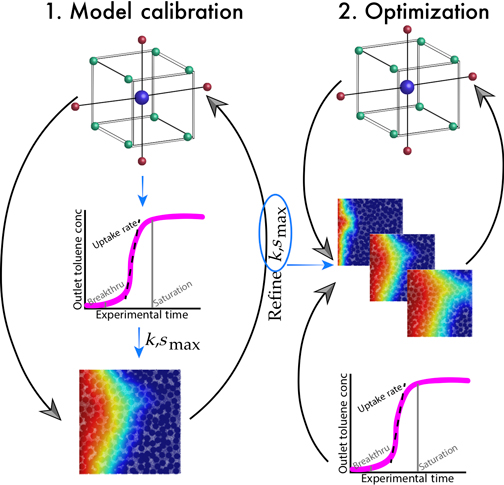Crossref Citations
This article has been cited by the following publications. This list is generated based on data provided by
Crossref.
Oña Chuquimarca, Samara
Ayala-Ruano, Sebastián
Goossens, Jonas
Pauwels, Laurens
Goossens, Alain
Leon-Reyes, Antonio
and
Ángel Méndez, Miguel
2020.
The Molecular Basis of JAZ-MYC Coupling, a Protein-Protein Interface Essential for Plant Response to Stressors.
Frontiers in Plant Science,
Vol. 11,
Issue. ,
Vyshegorodtseva, E. V.
Matskan, P. A.
and
Mamontov, G. V.
2020.
Formation of hierarchical MIL-100(Fe)diatomite composite.
Vol. 2304,
Issue. ,
p.
040018.
Tan, Jinwang
Cannon, Andrew
and
Ryan, Emily
2020.
Simulating dendrite growth in lithium batteries under cycling conditions.
Journal of Power Sources,
Vol. 463,
Issue. ,
p.
228187.
Cannon, Andrew
and
Ryan, Emily M.
2021.
Characterizing the Microstructure of Separators in Lithium Batteries and Their Effects on Dendritic Growth.
ACS Applied Energy Materials,
Vol. 4,
Issue. 8,
p.
7848.
Pollard, Zoe A.
Cannon, Andrew
Ryan, Emily M.
and
Goldfarb, Jillian L.
2022.
Capturing the effects of particle heterogeneity on adsorption in a fixed bed.
AIChE Journal,
Vol. 68,
Issue. 4,
Evdokimova, E. V.
Matskan, P. A.
and
Mamontov, G. V.
2022.
MIL-100(Fe)/Diatomite Composite with Hierarchical Porous Structure for Sorption of Volatile Organic Compounds.
Russian Journal of Physical Chemistry A,
Vol. 96,
Issue. 1,
p.
171.
Schofield, Parker
Luo, Yuting
Zhang, Delin
Zaheer, Wasif
Santos, David
Agbeworvi, George
Ponis, John D.
Handy, Joseph V.
Andrews, Justin L.
Braham, Erick J.
Balakrishna, Ananya Renuka
and
Banerjee, Sarbajit
2022.
Doping-Induced Pre-Transformation to Extend Solid-Solution Regimes in Li-Ion Batteries.
ACS Energy Letters,
Vol. 7,
Issue. 10,
p.
3286.
Ryan, Emily
Roshandelpoor, Athar
Pollard, Zoe
Goldfarb, Jillian L.
and
Vakili, Pirooz
2023.
Prospective on methods of design of experiments for limited data scenarios in materials design and engineering.
MRS Communications,
Vol. 13,
Issue. 6,
p.
1087.
Pollard, Zoe A.
Roshandelpoor, Athar
Vakili, Pirooz
Ryan, Emily
and
Goldfarb, Jillian L.
2023.
Towards tunable polymer foam fabrication: A case study to advance green materials development in limited data scenarios.
AIChE Journal,
Vol. 69,
Issue. 4,
Amna, Riffat
and
Alhassan, Saeed M.
2024.
A Comprehensive Exploration of Polysulfides, From Synthesis Techniques to Diverse Applications and Future Frontiers.
ACS Applied Polymer Materials,
Vol. 6,
Issue. 8,
p.
4350.



